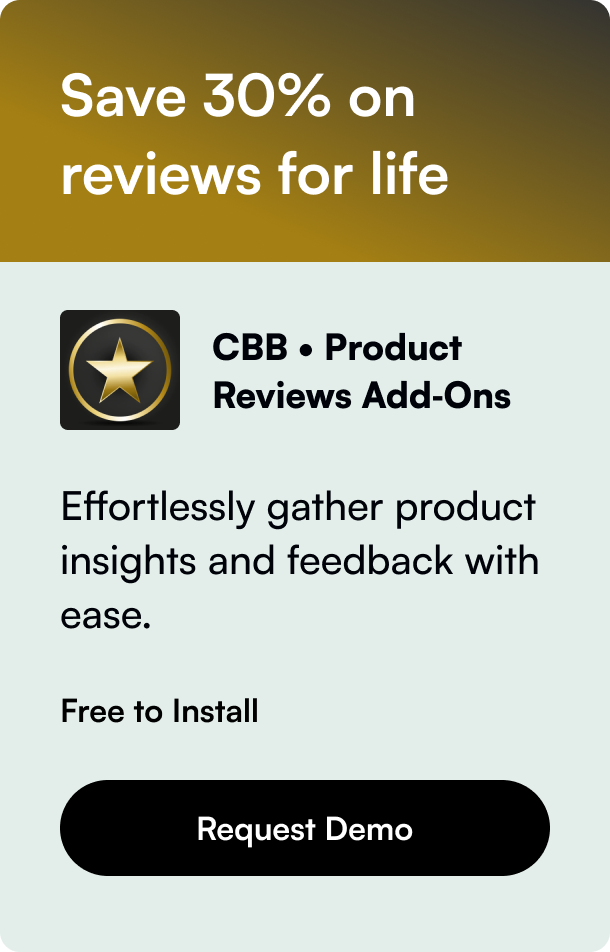Table of Contents
- Introduction
- The Power of QR Codes for Your Shopify Store
- Creating QR Codes for Your Shopify Store
- Best Practices for Using QR Codes in Your Shopify Store
- Conclusion
- Frequently Asked Questions
Introduction
Did you know that QR codes have revolutionized the way businesses connect with their customers? With a simple scan, these ingenious squares of black and white patterns can ferry customers straight to your digital doorstep. If you're a Shopify store owner looking to leverage this technology, you're in the right place. This blog post will unwrap the mystery of how to get a QR code for your Shopify store, guiding you through the benefits, creation process, and optimal utilization of QR codes for boosting your online presence and sales.
QR codes, originally developed in Japan for the automotive industry, have found a new lease on life in the digital age. Their ability to link the physical world to the digital realm is unparalleled. For Shopify store owners, this presents a unique opportunity to enhance user engagement, improve customer service, and drive sales. Let's dive deep into how to create and effectively use QR codes for your Shopify store, making your business not only more approachable but also more innovative.
The Power of QR Codes for Your Shopify Store
QR codes can serve as the bridge between your physical and digital storefronts. Whether you're selling online, in person, or a blend of both, QR codes can streamline the customer journey, offering a seamless transition to your online store, product pages, or promotional content. By incorporating QR codes into your marketing strategy, you're providing customers with a hassle-free way to explore your products, learn more about your brand, and make purchases with just a quick scan.
Advantages of Integrating QR Codes into Your Shopify Store
- Direct Access to Your Store: Place QR codes on physical products, packaging, or marketing materials to provide instant access to your online store or specific product pages.
- Promotions and Discounts: Use QR codes to offer special deals, encouraging more scans and, consequently, more sales.
- Enhanced Customer Engagement: Make it easier for customers to discover more about your products or services, leading to increased interaction and engagement.
- Trackable Metrics: With dynamic QR codes, track the number of scans, location data, and the effectiveness of different campaigns, allowing for refined marketing strategies.
Creating QR Codes for Your Shopify Store
Shopify offers straightforward solutions for store owners to generate QR codes, either directly through its platform or via third-party QR code generator apps available in the Shopify App Store. Here's how you can get started:
Using Shopify’s Built-In QR Code Generator
Shopify has simplified the process of creating QR codes for your store with tools like the Shopcodes app. This app allows you to generate QR codes that link directly to product pages or checkout pages, making it incredibly easy for customers to make a purchase.
Leveraging Third-Party QR Code Generator Apps
The Shopify App Store is brimming with QR code generator apps, each offering its unique set of features. From creating dynamic QR codes that can be updated after printing to incorporating your brand logo into the design, these apps provide enhanced customization options and analytic tools to track your QR code performance.
Best Practices for Using QR Codes in Your Shopify Store
To maximize the benefits of QR codes, it's crucial to follow some best practices:
- Clear Call to Action (CTA): Always include a clear CTA near your QR code, guiding users on what to do or expect upon scanning.
- Optimal Placement: Ensure your QR codes are placed where they are easily noticeable and accessible to your target audience.
- Mobile Optimization: Since QR codes are primarily scanned with mobile devices, make sure the linked content is optimized for a mobile-friendly experience.
- Test Before Launching: Always test your QR codes with different devices and QR code scanning apps to ensure they work flawlessly.
Conclusion
QR codes are becoming an essential part of the digital marketing toolkit for eCommerce businesses, including Shopify stores. By understanding how to get a QR code for your Shopify store and implementing best practices in their usage, you can significantly enhance your customer's shopping experience, leading to increased engagement and sales. As technology continues to evolve, staying ahead by adopting innovative solutions like QR codes will set your business apart in the competitive eCommerce landscape.
Remember, the key to successful QR code implementation lies in creative integration with your marketing efforts, clear CTAs, and consistent tracking and optimization based on performance data. With these strategies in place, your Shopify store can leverage QR codes to unlock new pathways to growth and customer satisfaction.
Frequently Asked Questions
Can I generate QR codes for free for my Shopify store? Yes, Shopify offers built-in tools like the Shopcodes app for generating QR codes free of charge. Additionally, numerous free third-party QR code generators are available on the Shopify App Store.
Are Shopify QR codes dynamic? While the basic QR codes generated through Shopify’s own tools are static, third-party apps offer the option to create dynamic QR codes, which can be edited and tracked after printing.
How can I track the performance of my QR codes? By using dynamic QR codes generated through third-party apps, you can access analytics on scans, including time, location, and device used, helping you understand their effectiveness and adjust your strategy accordingly.
What is the best place to put QR codes for my Shopify store? QR codes work best when placed where your target audience can easily notice and scan them. This could be on product packaging, marketing flyers, business cards, or in physical store locations.
Can QR codes help in improving my Shopify store’s SEO ranking? Indirectly, yes. While QR codes themselves don’t affect SEO, the increased traffic and engagement from QR scans can positively impact your site’s metrics, which are crucial for SEO ranking.









